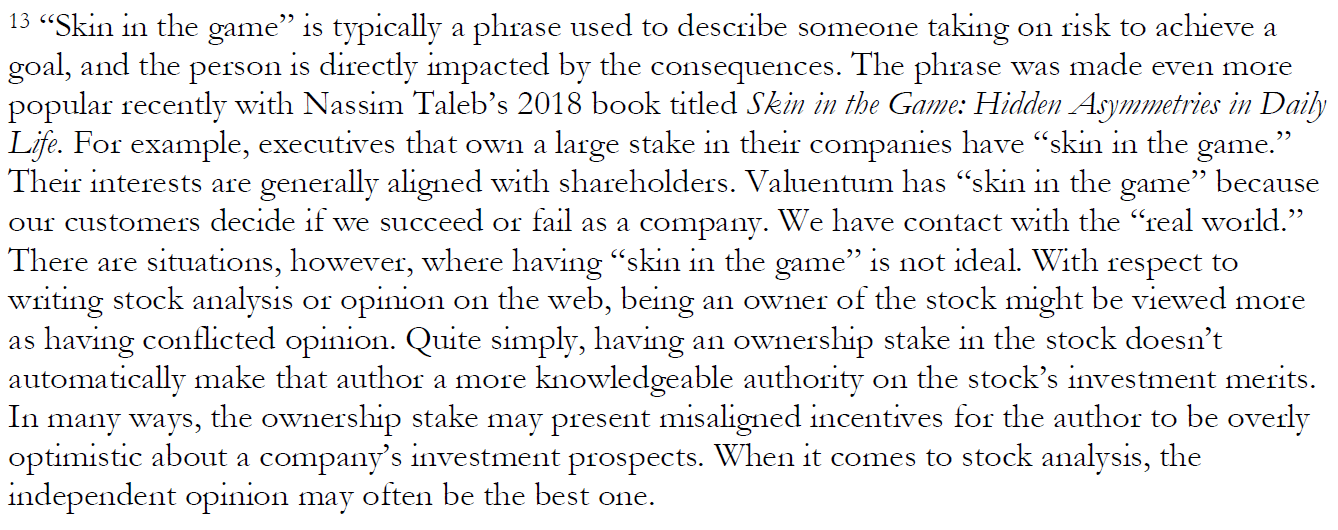Member LoginDividend CushionValue Trap |
Two Alerts and Bull Market On!
publication date: Jun 27, 2021
|
author/source: Brian Nelson, CFA
It’s very hard not to be bullish on the stock market these days. The prudence exercised by many of the largest companies in the S&P 500 remains unprecedented, in our view. Some of the best companies out there have tremendous balance sheets, as evidenced by huge net cash positions. Perhaps two of our favorite companies, Microsoft (MSFT) and Facebook (FB) are the best examples of this, but Apple (AAPL) still retains quite the large net cash hoard as it works to net-cash breakeven. As we look at the next couple years, most investors will continue to focus on the Fed. We’ve seen this song and dance following the Great Financial Crisis (GFC) that wreaked havoc on the markets between 2007-2009. Many believed that the markets would have a Fed-induced crisis that would obliterate stocks after the GFC as they tapered and withdrew stimulus, but the Fed executed flawlessly. The bears seized on a municipal bond crisis, and a European debt crisis, but we still had one of the strongest bull markets in history following the Great Financial Crisis -- a bull market that ran through the onset of the COVID-19 outbreak. Here we are just 16-18 months after the first case of COVID-19 was announced in the United States, and we are not just at new highs in the stock market--but we’ve already made many of them! The “old school” analysis with respect to drawdowns and withdrawals no longer holds in this hyper-intensive, information-driven economy, in our view, where 3-4 years’ worth of price behavior is experienced in 3-4 months. Those pursuing annual withdrawals in retirement in January, for example, didn’t experience any impact from the market meltdown, as January 2021 saw a market much higher than January 2020, despite the most abrupt fall in market history. Bear markets in the future may be even shorter than the 11.3 month historical average, too. The COVID-19 bear market was just 1.1 months. We crunched the numbers, and a 60/40 stock/bond indexed and rebalanced portfolio has now trailed active stock selection, as measured by the S&P 500 Sector SPDR (SPY) as the midpoint, by 130 percentage points the past 10 years. The 60/40 stock/bond indexed and rebalanced portfolio failed at what it was supposed to do, too. During the worst of the COVID-19 stock market swoon, the 60/40 stock/bond indexed and rebalanced portfolio saved just 8 percentage points versus a full allocation to the largest U.S. equities. From our perspective, it has become hard to justify the 60/40 stock/bond indexed and rebalanced portfolio given its high correlation to equities, the vast underperformance during lengthy bull markets, and the short duration of bear markets when it comes to periodic withdrawals. The arguments against active stock selection have vanished, in our view. The vast underperformance of the 60/40 stock/bond portfolio over a 10-year and even 30-year stretch relative to a diversified S&P 500 portfolio may be the biggest reason. Not only has modern portfolio theory (MPT) failed in this respect, but quant finance has also dropped the ball in other areas. The huge underperformance of the small value factor during the past decade has shown that it is a fool’s errand to believe that past performance is prologue. The entire basis of quant research can be readily dismissed by the most common disclaimer in this industry warning about past analysis not being prologue, and yet, many continue to fall for the nonsense. Stay away from quant conclusions until they start factoring forward-looking expectations into their processes. The best of times with respect to cryptocurrency may very well be behind us as well. The alternative asset market isn’t as strong as it was in the beginning of this year, and Bitcoin (GBTC) and other cryptocurrencies have followed suit. A few cryptocurrencies have even zeroed out, and this is the true risk faced by anybody seeking the merits of modern portfolio theory with a small crypto allocation. An asset must have intrinsic value and go up in the long run for MPT to hold merit, meaning that you need a better model than just mashing historically uncorrelated assets together. The model we use at Valuentum is the discounted cash flow model, or enterprise valuation. We then seek to diversify among the most undervalued assets that have strong market backing via technical and momentum indicators. Inflation is the talk of Wall Street the past few months, but we’ve seen a pullback in some of the prices that have surged. The housing market remains resilient, but lumber prices have come in quite a bit. The auto industry is working past the semiconductor shortage, and the huge ramp in used car sales may now be behind us. Crude oil and gasoline prices have increased materially, but the abundance of shale oil should keep a tight lid on long-term crude oil price expansion. Unlike OPEC, the U.S. government can’t limit production in a free economy, and the invisible hand will act as the counterbalance to high energy prices in time. We like stocks in an inflationary environment, and we love big cap tech and large cap growth in any environment. Many are expecting net-cash rich corporates to start funneling some of their huge cash positions into the equity markets, and we don’t think they’ll be getting too complicated with their strategies. Share buybacks will be one avenue that they’ll use to deploy the capital, but many will also seek to allocate capital to the broader S&P 500, in our view. Money market funds have surged as a result of government stimulus since the COVID-19 meltdown (there is over $4.5 trillion just sitting in money market funds according to Bloomberg, more than at the peak of the GFC), and there may be hundreds of billions of dollars ready to enter the stock market in the next 6 months alone. Corporations are cash rich, and bond yields are paltry. Buying demand for equities could set off a huge advance in stock prices, in our view, and the Fed may be fine with this as they were during the 10-year period following the GFC. We hardly experienced any meaningful inflation after the GFC either, but stock prices soared. In many ways, we’re expecting a replay of the 2010s (last decade) in the 2020s (this decade), and the next 10 years may very well be a replay of the Roarin’ 20s, a theme we have repeated before. We expect advisors and asset allocators to buy equities at almost every market dip, and we believe the Fed will support the markets in the event of even modest price weakness. These are unprecedented times, and that means the Fed will remain vigilant in support of equity prices. Our favorite ideas remain in the newsletter portfolios, and as we noted before, Alphabet and Facebook have been lights-out with their relative price performance so far in 2021. The Valuentum Buying Index (VBI) has also showed its efficacy of late, with Facebook and Korn Ferry (KFY), two of the top ratings on the VBI, soaring. Facebook was a huge gift a couple years ago (in 2018) when it dipped below $150 per share. The market couldn’t have been more wrong on shares, and the stock has now more than doubled since then, trading north of $340 per share of late. Facebook has registered more 10s on the VBI than any other company in our coverage. Though the meme-stock frenzy has been annoying and reveals the fragility of market structure as it relates to price-agnostic trading, the bias to the markets remains upward, in our view. Meme stock traders are long, advisors and asset allocators are pumping their clients’ money into the stock market on every dip, the short sellers have their backs against the wall, the Fed and Treasury aren’t going to go away, and more stimulus in the form of an infrastructure bill may serve to pad the bottom line of many in the energy and industrial sectors--the weakest sectors in recent years. The markets could go up for a long time yet, and we remain very bullish. In the Dividend Growth Newsletter portfolio, we’re adding a 5-7% weight in ExxonMobil (XOM) and a 3-4% weighting in Chevron (CVX). In the Best Ideas Newsletter portfolio, we’re adding a 4-6% weighting in ExxonMobil and a 3-5% weighting in Chevron. We like their respective dividend yields, and the strengthening energy markets have only made their future free cash flow prospects better. See here. These changes will be reflected in the next editions of the newsletters, the July edition of the Dividend Growth Newsletter to be released Thursday, July 1, and the July edition of the Best Ideas Newsletter to be released July 15. Due to the July 4th holiday weekend, the July edition of the Exclusive publication will be released Saturday, July 10. The Best Ideas Newsletter portfolio >> The Dividend Growth Newsletter portfolio >> [Note: The stock and dividend reports for ExxonMobil and Chevron will be updated this weekend. Correction: The article updates Chevron's weighting to 3%-4%.] ----- Also tickerized for holdings in the DIA. It's Here!
The Second Edition of Value Trap! Order today!

-----
Image Source: Value Trap ---------- Valuentum members have access to our 16-page stock reports, Valuentum Buying Index ratings, Dividend Cushion ratios, fair value estimates and ranges, dividend reports and more. Not a member? Subscribe today. The first 14 days are free. Brian Nelson owns shares in SPY, SCHG, QQQ, DIA, VOT, and IWM. Brian Nelson's household owns shares in HON, DIS, HAS. Some of the other securities written about in this article may be included in Valuentum's simulated newsletter portfolios. Contact Valuentum for more information about its editorial policies. |


 By Brian Nelson, CFA
By Brian Nelson, CFA
3 Comments Posted Leave a comment